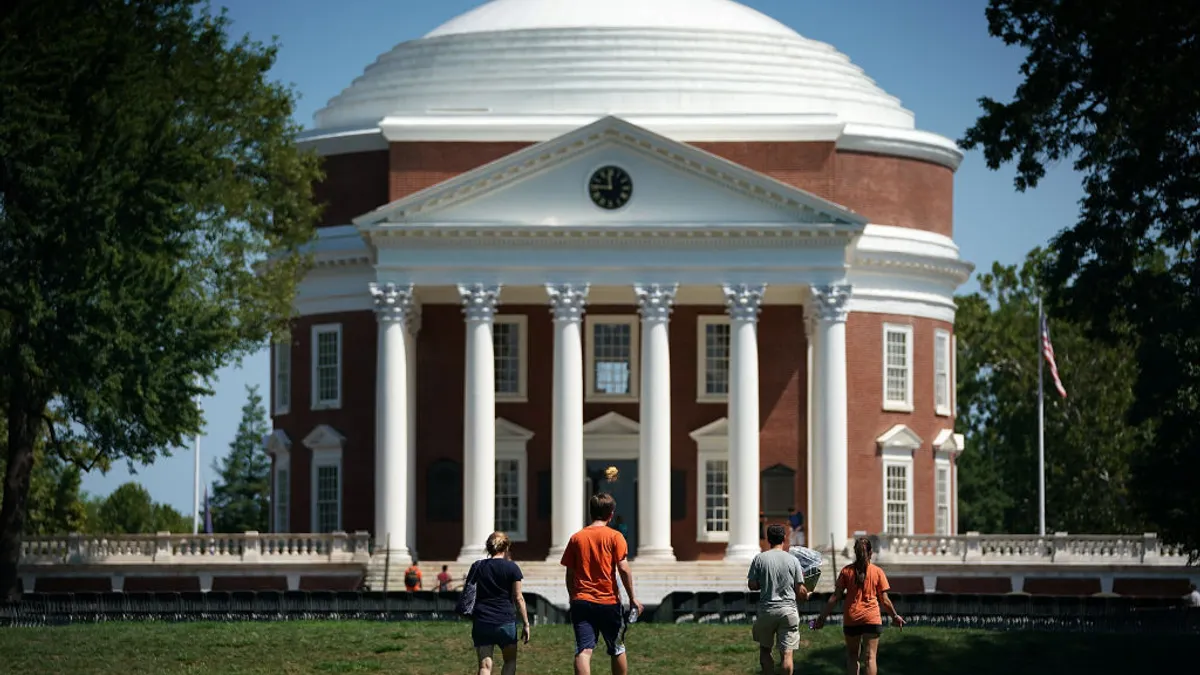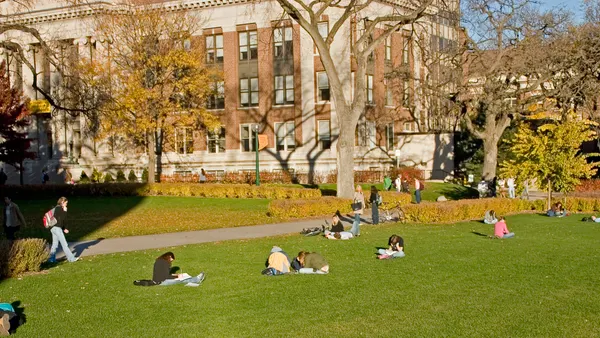The most recent enrollment figures from the spring 2023 term have brought colleges and universities good news — the steep losses seen throughout the coronavirus pandemic show signs of stabilizing.
But a deeper look at the data reveals complicated trends at play.
Part of that stabilization has been fueled by an influx of dual-enrollment students, who take community college classes while in high school. Meanwhile, sectors that have withstood the worst effects of the pandemic are now reeling from losses. Graduate enrollment has slipped, erasing some of the gains it made only two years ago.
Below, we’re breaking down five enrollment trends from the latest data provided by the National Student Clearinghouse Research Center.
Enrollment losses nearly stabilized in spring 2023
The overall higher education sector has been battered by enrollment losses for more than a decade, a trend aggravated by the pandemic. But those declines have begun to slow, with spring 2023 only bringing a 0.5% year-over-year enrollment loss, compared to a 3.1% dip in spring 2022 over the year prior.
Community colleges, which bore the brunt of declines during the health crisis, also saw their fortunes reverse. This sector’s enrollment rose 0.5% during spring 2023, thanks largely to dual enrollment increases.
Four-year for-profit colleges have also continued to see gains, with enrollment rising 1.4%. Their counterparts in the public and private nonprofit space fared worse, however, with respective declines of 0.8% and 1%.
Shorter-term undergraduate credentials gain traction
Some of the trends among undergraduate students aren’t surprising. For instance, the number of associate degree-seeking students plummeted alongside declines in community college enrollment.
But the past three years have unearthed one interesting finding: Undergraduates appear increasingly interested in shorter-term credentials. This was especially true in spring 2023, when undergraduate types other than associate and bachelor’s degree seeking students surged 4.8% compared to the year before. This category includes certificate, teacher preparation and noncredential programs.
Rising interest in shorter-term credentials may be part of a multi-decade trend.
The number of postsecondary certificates awarded by public colleges has risen at a steady clip since the 1995-96 academic year, according to an analysis from New America, a left-leaning think tank. Meanwhile, the number of certificates awarded by for-profits peaked around 2010 and has fallen ever since.
Graduate enrollment tanked in spring 2023
Graduate enrollment was one of the few bright spots for colleges during the early days of the pandemic. But that trend has since reversed, with graduate programs joining in the declines seen across other higher education sectors.
For-profits may be hit especially hard. They had the largest graduate enrollment drops in spring 2023, with student headcounts falling 3% compared to the year before. They also were the only institution type to see graduate enrollment declines last spring, recording a 5.2% loss.
Younger enrollees flock to college
Nontraditional students — typically thought of as those older than 24 — were the only age group to see enrollment increases during spring 2021. But two consecutive years of decline have since followed, with a 5.5% loss in spring 2022 and a 3.3% decrease in spring 2023.
Traditional students, on the other hand, have stabilized from declines seen earlier in the health crisis, with a 0.3% increase in spring 2023. At the same time, the number of younger students, who are largely dual enrollment students, surged, rising 8.2%.
This is also part of a yearslong trend. Community college enrollment has been declining for more than a decade, with rising headcounts of students under 18 partially offsetting those losses.
Enrollment recovery wasn't even across the US
College enrollment changes have been uneven across the U.S. Mississippi had the largest declines in spring 2023, with enrollment plummeting 6.8%. Washington, which has recently seen college-going rates fall among high school graduates, was next, with student headcounts declining 5.3%.
But other states were more resilient in spring 2023. Maine saw the greatest enrollment bump in the country, with a 5.7% increase. The state has enjoyed an enrollment boom at its community colleges since it implemented a temporary free college program, though its university system saw declines.














